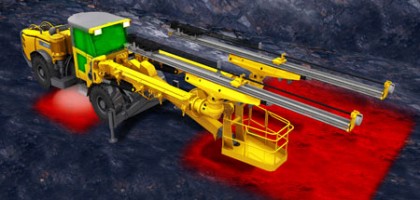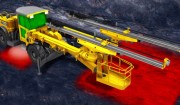Minimizing human error
Human error is a common denominator in many accidents and incidents. Here, Sverker Hartwig shows how errors can be reduced with thoughtful design innovations on rigs, trucks and loaders.
Whenever an accident occurs in the mining and construction industry, human error is almost always a major contributing factor. In fact, the vast majority of accidents in the industry nowadays occur because someone ?screwed up?.
Interestingly, it is also a fact that most incidents do not occur while people are busy operating equipment, but while they are just moving around the worksite or simply getting from one place to another.
On my travels I have seen how many of these incidents could have been so easily avoided. I?ve seen everything from broken ankles caused by jumping from a drill rig in the dark and fingers caught in doors, to serious injuries and even fatalities caused by a disregard for safety procedures.
It?s the same story when it comes to persona l protection such as the wearing of helmets with chin straps and safety glasses. These are excellent, yet when someone gets hurt, more often than not we find that the victim was not wearing the recommended protective equipment at the time.
Every case has its own set of circumstances, but whether they be major or minor incidents, they all have consequences in terms of human suffering, downtime and loss of production for our customers.
Over the years, technological advances have done a great deal to reduce the number of accidents and injuries. As a responsible and leading supplier, Atlas Copco has consistently contributed with a steady stream of innovations designed to keep operators out of harm?s way, as well as providing extensive training programs using equipment simulators, comprehensive operator instructions and safety interlocks.
A long way to zero
Happily we can see that this work has been very effective. The number of days lost due to accidents and injuries in underground and surface mining in the US alone has decline since the 1970s by nearly 90 percent.
Despite these achievements, however, we still have a long way to go to eliminate the risk of human error altogether. In the mining industry, the obvious way to do this is to try and make all operations as autonomous as possible. In other words, to remove as many people as we can from the mining area and make sure that those who are left are equipped with the very best tools.
But even with the best autonomous operation there will still be a need for people to perform preventive maintenance and service. That implies that we need to intensify our efforts to deal with issues such as incorrect handling, electric shocks, fluid leakage, accidental dropping of heavy items, and so on.
For driller s and drivers, the safest place to be is the cabin of the drill rig, loader or truck. Our equipment has many built-in features that help to increase operator safety such as ROPS and FOPS protection. Moreover, today?s cabins are all designed with smooth edges and without protruding components that could conceivably injure an operator who omits to wear a helmet. But the fact is, the moment the operator steps outside, he or she is immediately exposed to danger.
With a drill rig, it is mainly the area in front of the booms during drilling that poses a threat along with falling rock, but what about the ground below the steps where broken rock or other debris might cause an operator to trip and fall? With loaders or mine trucks, it is when these vehicles are on the move that the danger is greatest.
Small things count
In the quest for total safety, it is often the small things that count. On our Boomer rigs we have installed a light that illuminates the ground below the steps. On both Boomer and underground trucks, warning signals on the ignition switch alert people who may be nearby when an operator is about to start the engine.
All rigs being used in the automatic mode have light curtains on both sides that will detect anyone walking into the danger zone and will automatically shut the machine down. Key service points on the rigs as well as the underground loaders and trucks are placed on the engines? cool side and these are also accessible from the ground, removing the need for the operator to climb or stand on a ladder.
On our underground trucks, the low, flat hood design increases visibility. We have spring-applied hydraulic release brakes and automatic brake testing, a safety barrier if there is a need to access components on top of the vehicle, and much more.
These are just a few examples and by no means a comprehensive review of all the safety features we offer. Nonetheless, they represent important steps along the road to minimizing and ultimately eliminating equipment downtime.
Epiroc operated under the trademark “Atlas Copco” prior to January 1, 2018.



Here:
Us: